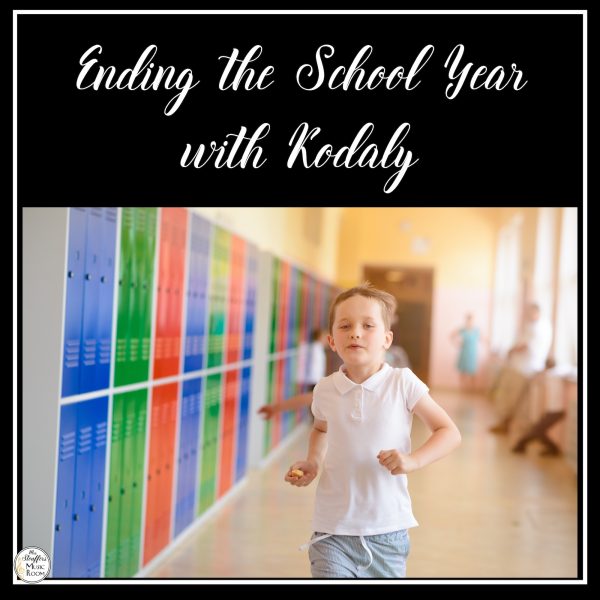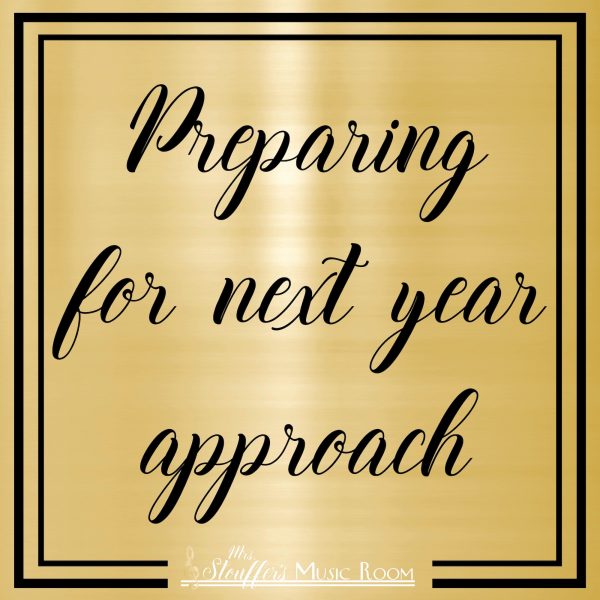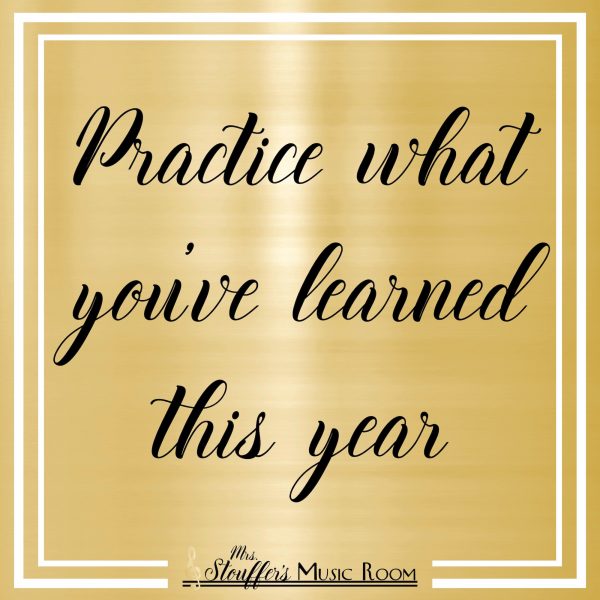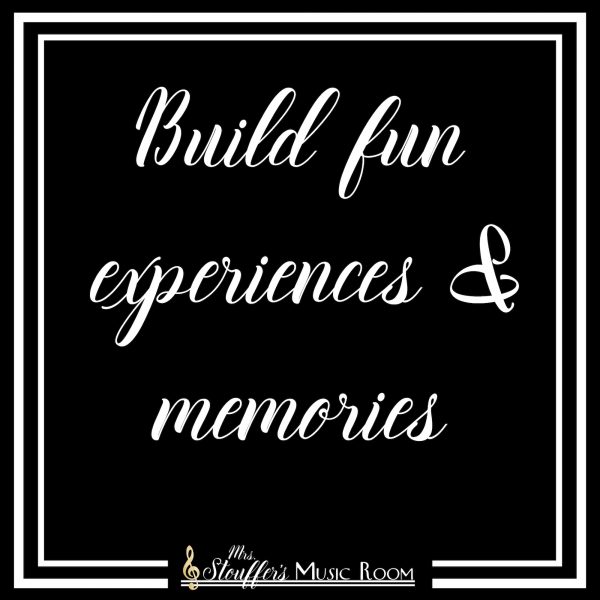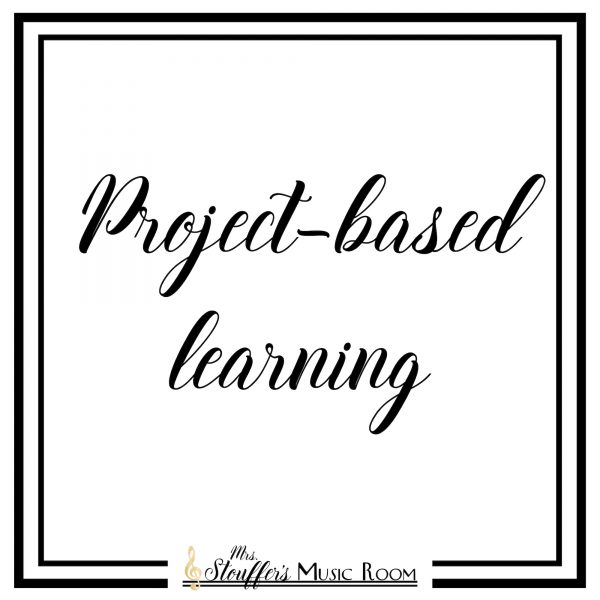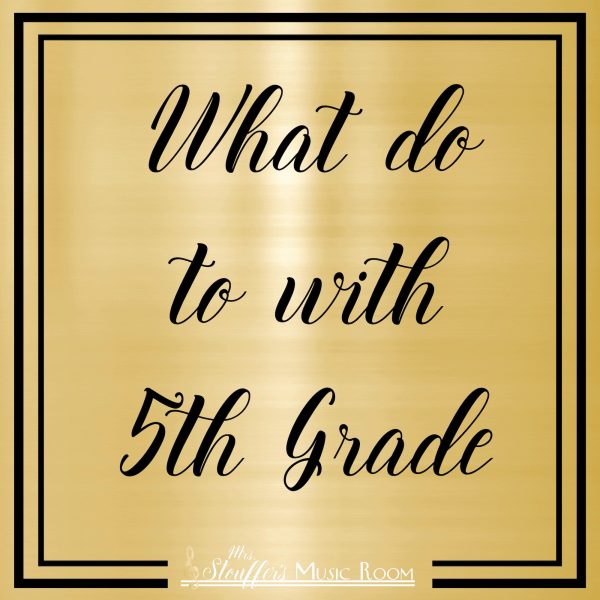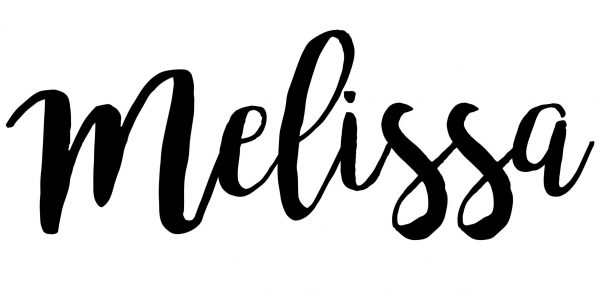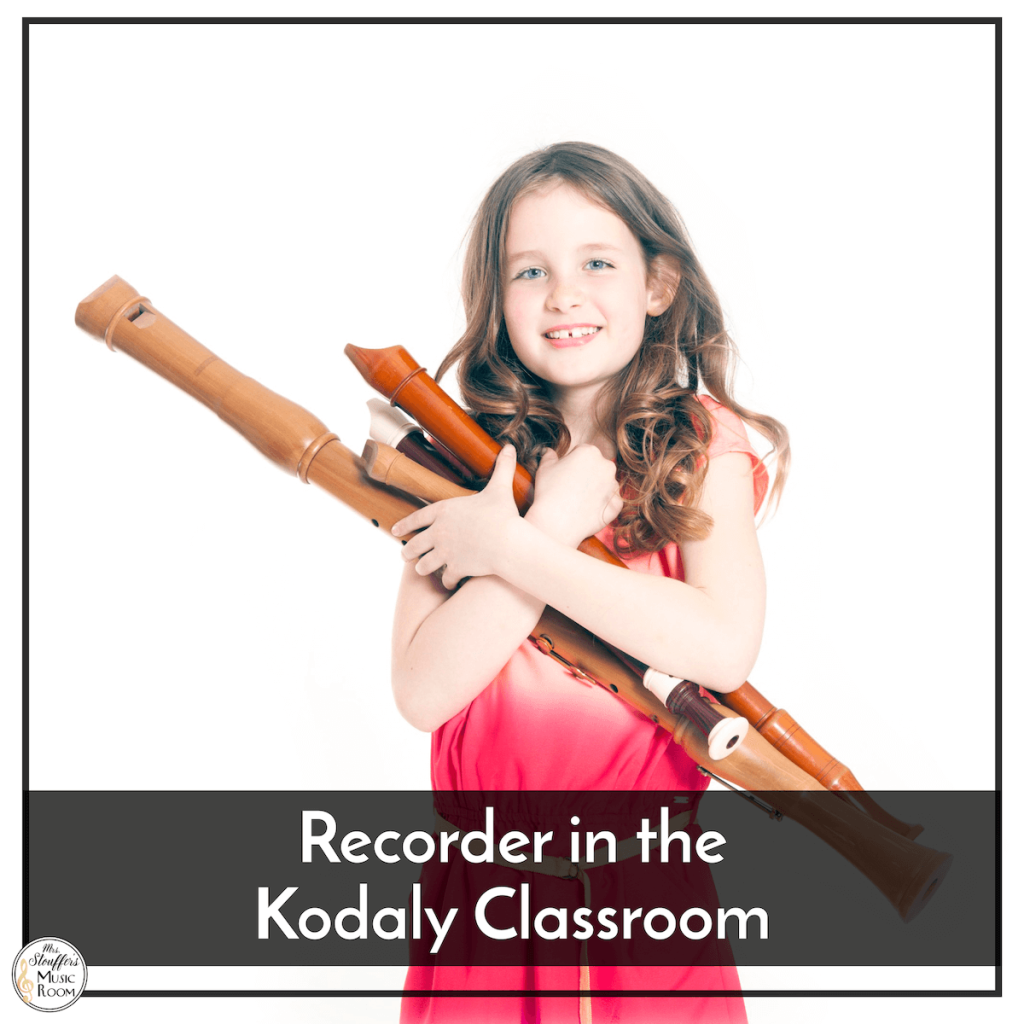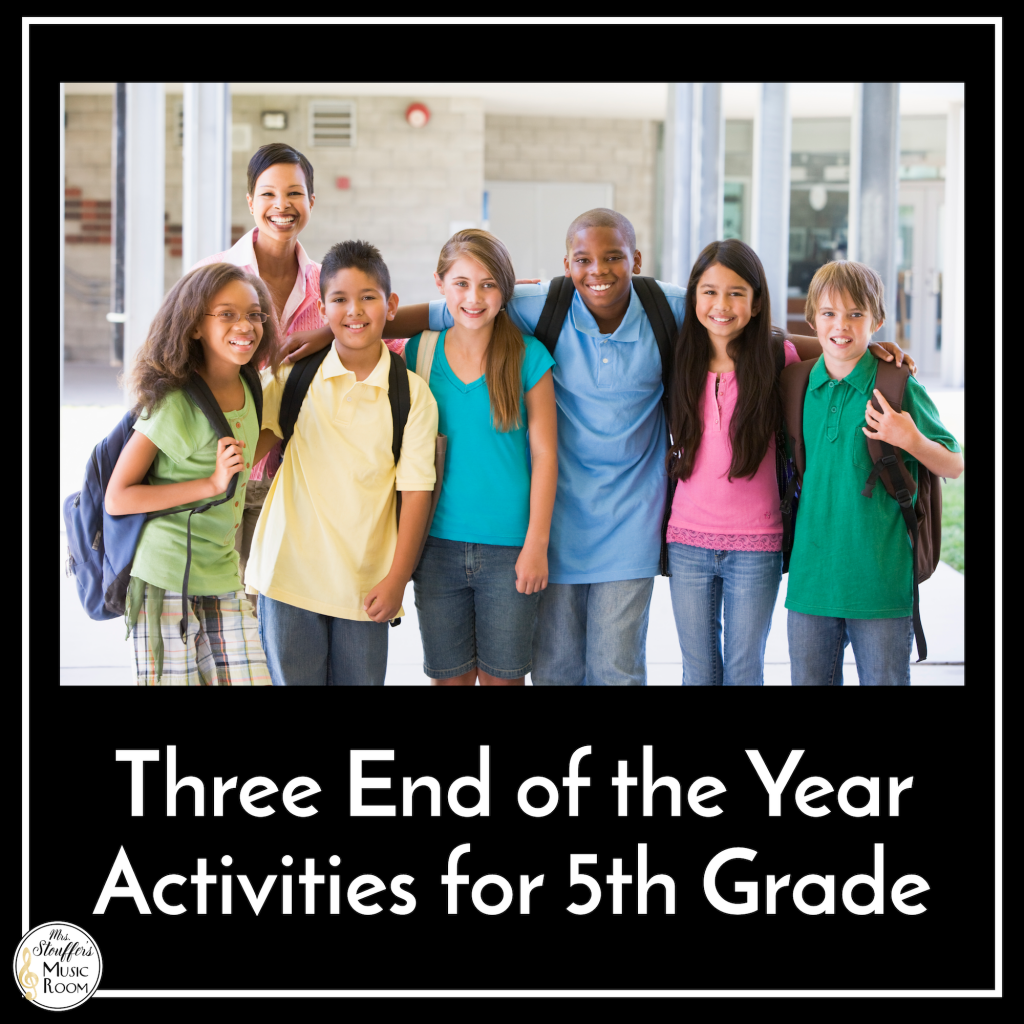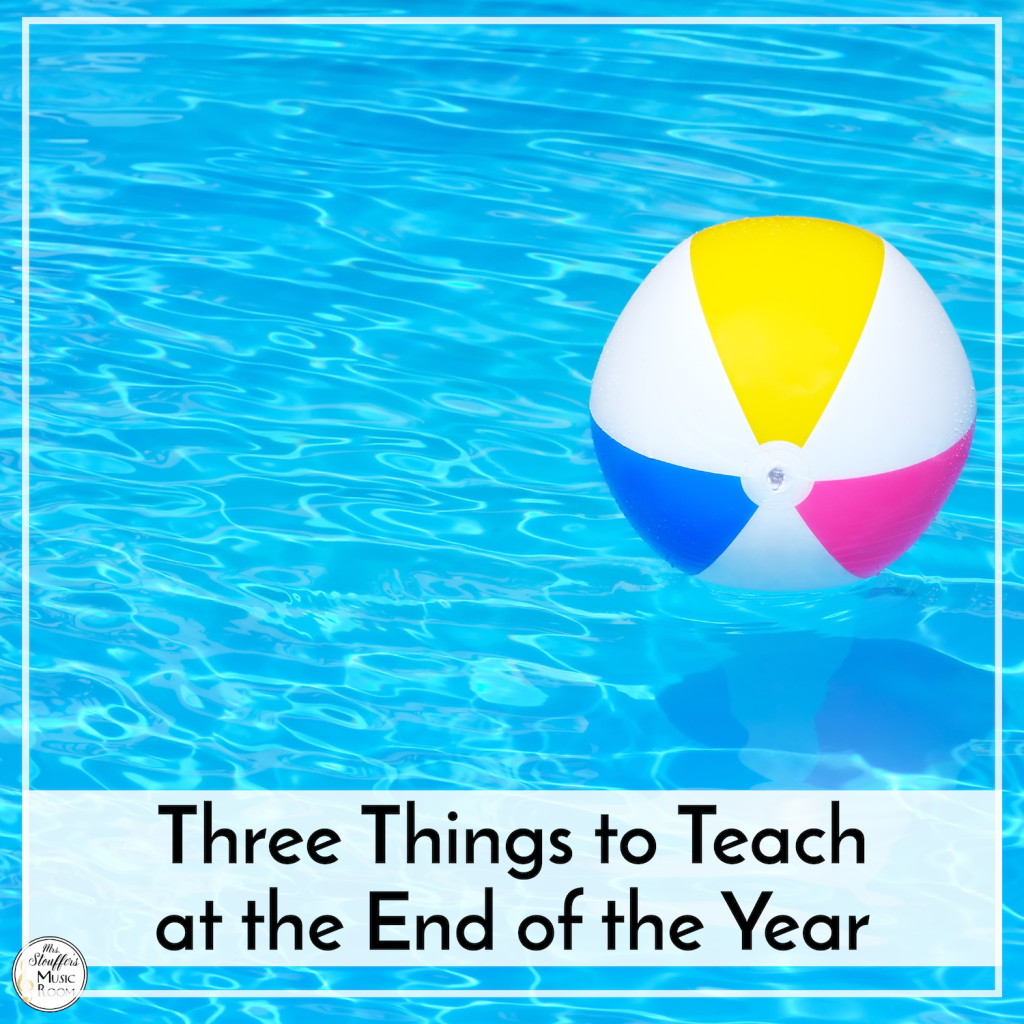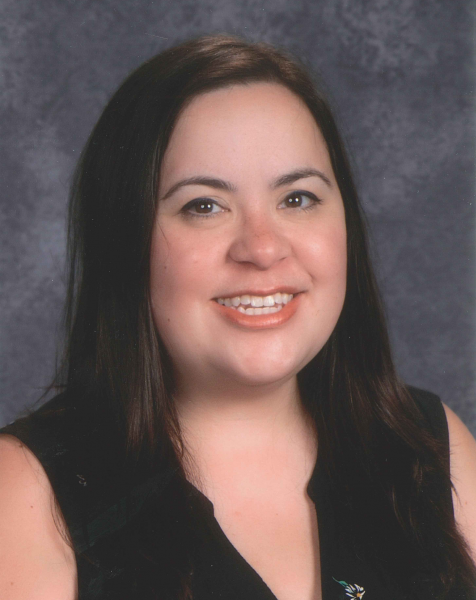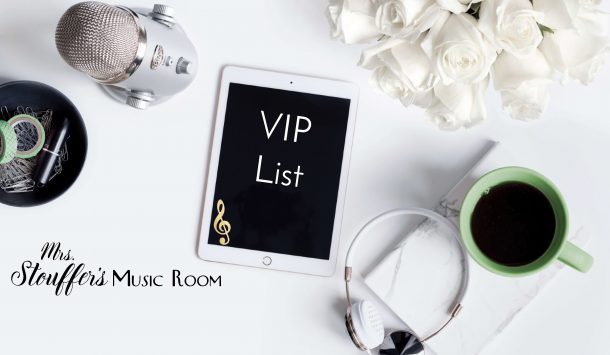If you’re like me, you’ve spent the whole year structuring your teaching so that your students are maximizing their fun and learning potential. But as the year draws to a close, the energy dips and our eyes start to turn toward glorious summer.
You start to wonder about how to end the year in the Kodaly classroom.
Ending the year with a Kodaly perspective can take many forms. There are some different paths you can take or combine including preparing next year’s concepts, practicing this past year’s learning, building fun and memories, or integrating project-based learning.
There is no right or wrong answer to what you should do. A lot of this is based on your preference and what’s happening at the school.
Read on for more practical ideas on how to end the year.
Note: While I’m approaching this from the Kodaly perspective, these ideas also work well with any other approach or teaching style.
#1 Preparing for next year approach
One valid way to end the year is just to keep things rolling. In this approach, you look at your sequence of concepts (Check the link for the one I use!) for the next year and begin preparing your kids for it.
You can teach your students the songs and games you use with those new concepts and even begin to have them experience the concept physically and visually.
For example, in early second grade, my students are going to learn about half notes. One of the songs I use with this is the song “Sea shell”. The game I play with this goes as follows:
- Sing the song normal while performing 3-5 different motions to the beat miming looking for shells.
- When I put my ear up to the shell, it doesn’t sound like the ocean; it makes a weird “ha” sound. Sing the song on the syllable “ha.”
- Ask the students what their shell says. Sing it that way.
- Repeat as desired.
At the end of the year, you can easily introduce this song and game in first grade. You could also add some rhythm clapping focusing on the drawn-out half note and do some visuals with large shells to demonstrate the rhythm if you wanted. This is preparing first grade for next year.
Benefits of this approach:
- Keeps learning new things
- Head start for next year
Downsides of this approach:
- Teacher still has to prep
#2 Practice what you’ve learned this year
Flipping the last approach on its head, for this strategy you just come up with more complicated practice applications for what the students have learned for this past year.
Take a look at your sequence again and think about what the students have learned and how to go deeper with that learning. Keep doing the same kinds of activities, but just make them more challenging.
For example, if your second graders have followed a standard Kodaly sequence they are probably familiar with mi, re, and do. They have most likely practiced reading, creating, and improvising with it, but you can take this time and go deeper with more challenges.
Try this for a challenging improv activity with the song, “All Around the Brickyard:”
- Have the class play an open fifth on the xylophones (or sing it on do and sol if you don’t) while they sing the song.
- For a B section, have them do a soft roll on that same fifth. At the same time, one student improvises a 4 or 8 beat line with mi, re, and do and ending on do.
- The class needs to echo back the melody that the student made up.
- Repeat the AB until all students have performed.
You can do something similar with all concepts. Think about how you can dig deeper for practice.
Benefits of this approach:
- Students get a stronger understanding of concepts
- Classroom stays focused until the end of the year
Downsides of this approach:
- More teacher prep
- Students must focus (it may be hard at this point in the year)
You may also enjoy this post I did earlier on improvisation with solfege.
#3 Build fun experiences and memories
Some people may argue that this approach is “giving up” on the part of the teacher. For this, you just review games and activities that are fun and engaging from this year or even year’s past.
You may let the students help you pick what to play, but the focus is on the fun parts of the music and not the learning.
Kodaly purists or overly serious teachers may not like this, but the students can end the year on a really positive note. It can help them get excited for the next year.
I also like this approach because you can emphasize how they can play these games over the summer and take the music home with them.
When I do this, here’s one activity I do that works really well. I call it the “Dice Game:”
- Have the students give you six ideas of any game or activity from this year or year’s past they want to play.
- Number them 1-6.
- Roll a die and play the game.
- Erase the activity when done.
- Repeat until class is over.
Benefits of this approach:
- Students have a lot of fun
- Can easily transfer home for the summer
- Less teacher prep
Downsides of this approach:
- No focus on learning
#4 Project-based learning
With my older grades, I tend to do this approach for the last month or so of school. I pick a folk story or Orff-based project that matches the music literacy elements we’ve worked on this year and help walk my students through that.
For example, a few years ago, my fourth grade worked a lot on recorders and the extended pentatonic scale.
I found an old fairy tale and combined it with some music from the Orff volumes that fits those concepts. Then we started to put it together as a project in this general order:
- Taught the story with one of the simple barred instrument parts.
- Using notation, students learned the recorder and rhythm ostinati parts.
- Put the pieces together layer by layer (using body percussion and then applying to instruments).
- Gradually added actors and expressive movement which the students helped develop.
- Recorded the whole project and reflected on the experience.
This whole thing took us around four weeks of classes to do, but the students enjoyed every second of it because it was different from what we usually do, and they get more input.
Benefits of this approach:
- Still integrates concepts and applies to a larger project
- Different type of learning than what is normally done
- High student engagement
Downsides of this approach:
- More teacher prep
- Requires more active management on the teacher’s part
What to do with 5th grade?
It might worry you that your 5th graders (or whatever the last grade level you teach) didn’t get through all your content and now they’re moving on. What do you do with them at the end of the year?
Honestly, I think pretty much everybody has trouble with this. I wouldn’t stress out about it. If you think about the grand scheme, by teaching them in a sequence at all you’ve already accomplished what they needed to get.
Combining high-quality folk material, planned scope and sequence, and active music literacy instruction gives the students a more holistic perspective on music in general. And that’s the important part.
When push comes to shove, I’ll make sure they’re at least familiar with how all the diatonic solfege fits on the staff. I’ll cover the treble clef and the mnemonic devices (Every Good Boy Deserves Fudge) if I haven’t yet.
Other than that, I wouldn’t stress. This is your last chance to see them as students. Try to make it a fun experience that stays with them.
Recommendations
Ultimately, it’s up to you to pick what you want to do. I don’t believe there’s a right or wrong approach.
I combine several of these depending on exactly how much time is left in the year. In general, I do project-based application of concepts for the last month or so. When the year gets closer to the end, I’ll focus then on fun or practicing the year’s concepts deeper.
Comment on this post or email me and let me know which one you think you’ll try this year. Or if you do something completely different that you love, please let us know too.
Have fun, and good luck on ending your year!

